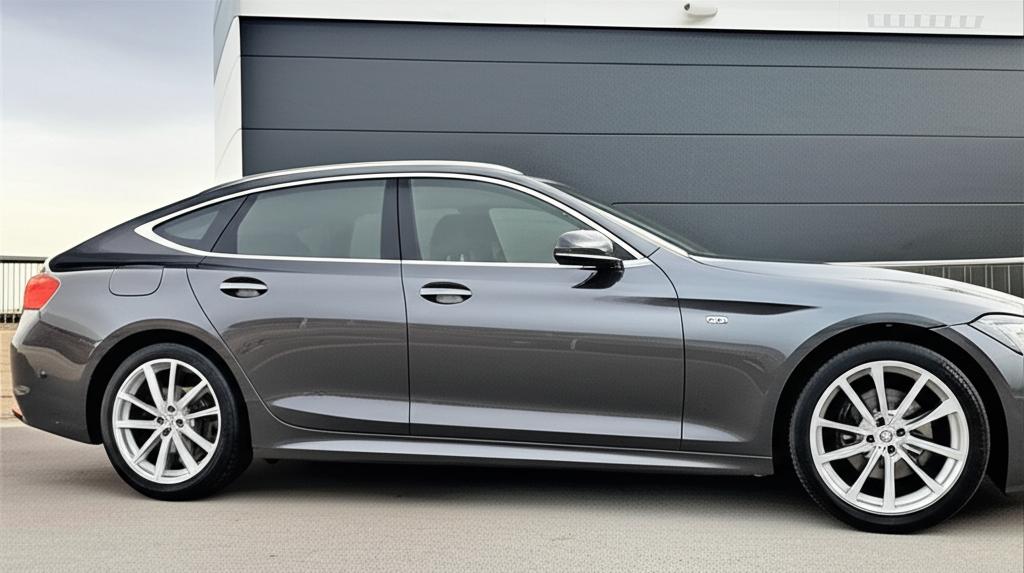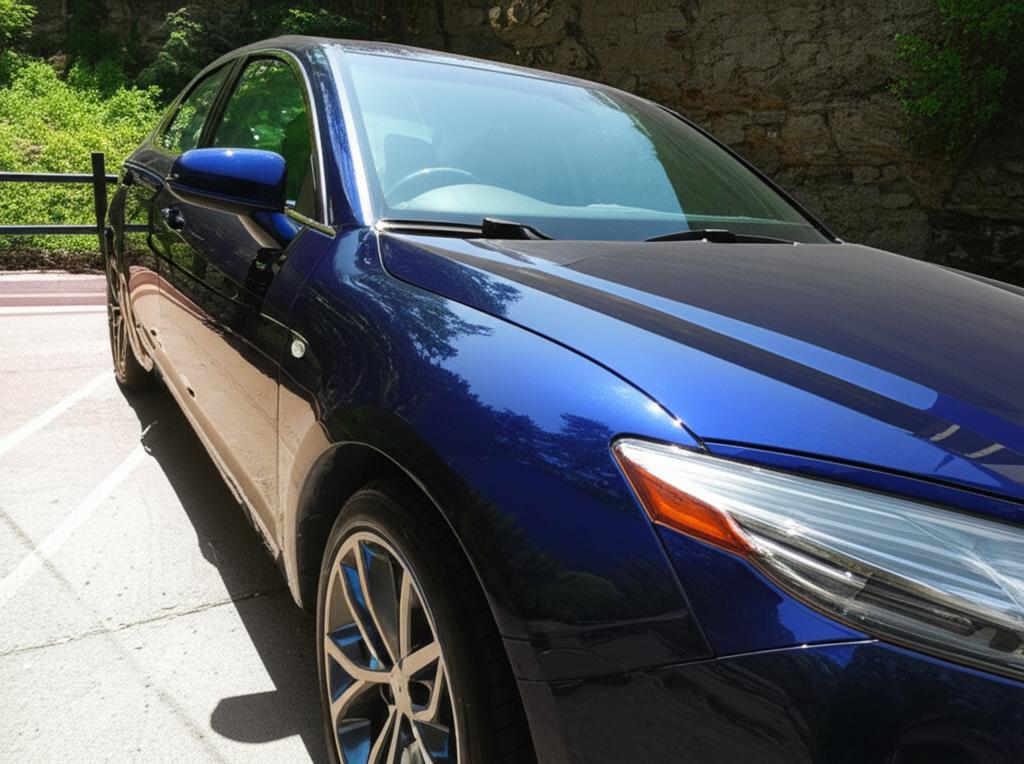Welcome to Thailand! As a new resident in this vibrant, bustling country, you’re likely enjoying the rich culture, delicious food, and stunning landscapes. You’ve settled into your new home, maybe found your favorite local spots, and perhaps, you’ve brought your car with you or purchased a new one here. Your car is your key to exploring your new surroundings, navigating city life, and enjoying weekend getaways.
However, alongside the excitement of driving in Thailand comes a unique set of environmental challenges that your car’s paintwork will face daily. The intense tropical sun, heavy monsoon rains, potential for road debris, and the sheer density of urban traffic can take a toll on your vehicle’s exterior faster than you might expect. You might be thinking, “My car looks great now, surely a regular wash and wax is enough?” But what if there was a way to provide a level of protection that goes far beyond traditional methods, preserving that showroom shine and protecting your investment against the rigors of the Thai climate and roads?

As a professional automotive protection consultant specializing in the Thai market, I’ve seen countless cars suffer preventable damage. From minor scratches and swirl marks to significant paint fading and chipping, the elements here are relentless. This is where Paint Protection Film, particularly advanced TPU (Thermoplastic Polyurethane) film, becomes not just a luxury, but a wise and often essential investment for car owners in Thailand.
A Real-Life Scenario: Protecting a New Start
Let me share a story about one of my clients, Sarah, who recently moved to Bangkok from abroad. She had just purchased a beautiful new sedan, her pride and joy, to help her get around the city for work and explore Thailand on weekends. Within just a few months, she started noticing small stone chips on the bonnet and bumper from highway driving, and fine scratches appearing on the door handles and side panels – likely from bags, rings, or tight parking spots.

Sarah was heartbroken. She loved her car and wanted to keep it looking pristine. She initially considered ceramic coating, which offers fantastic gloss and hydrophobic properties, making cleaning easier. However, after discussing her concerns about physical damage – the chips and scratches – I explained the superior physical protection offered by high-quality TPU film. We decided on a full front-end protection package, covering the bonnet, bumper, fenders, and mirrors, plus door cups and sill guards.
The process involved a thorough cleaning and paint correction to remove the existing minor damage, followed by the meticulous application of a premium, self-healing TPU film. Sarah was amazed by the result. The film was virtually invisible, restoring the paint’s depth and gloss. More importantly, it provided a robust, protective layer.
Months later, Sarah reported back. Despite navigating Bangkok’s busy traffic and taking several trips upcountry, her protected areas remained free from new chips and scratches. A minor scuff mark on her fender from a tight parking maneuver simply disappeared thanks to the film’s self-healing properties under the sun’s heat. She told me, “It’s given me such peace of mind. I don’t have to worry about every little stone or close call. My car still looks brand new, and cleaning is a breeze!” Sarah’s experience is a perfect example of how TPU film directly addresses the specific challenges of driving in Thailand.
Understanding Your Protection Options: Why TPU Stands Out
You might have heard of different ways to protect your car’s paint. Let’s break down the key differences, focusing on why TPU film offers unparalleled physical protection, especially relevant for the Thai environment.
| Feature | TPU Paint Protection Film (PPF) | Ceramic Coating | Traditional Wax / Sealant |
|---|---|---|---|
| Primary Benefit | Superior physical protection against chips, scratches, abrasions, and environmental contaminants. Self-healing properties. | Excellent gloss enhancement, hydrophobicity (water beading), chemical resistance, UV protection. | Basic gloss enhancement, minimal water beading, some UV protection (varies). |
| Protection Level (Physical Impact) | High – Thick, durable layer absorbs impact from stones, debris, minor scuffs. | Low – Thin, hard layer protects against chemical etching and light swirl marks, but offers minimal resistance to chips or scratches from physical impact. | Very Low – Offers no significant protection against physical damage. |
| Protection Level (UV & Environmental) | High – Blocks UV rays, protects against bird droppings, insect acids, water spots. | High – Excellent UV protection, chemical resistance, repels contaminants. | Moderate – Provides a basic barrier, but less durable and effective than film or coating. |
| Durability / Lifespan | Long – Typically 5-10 years or more, depending on quality and care. | Medium to Long – Typically 2-5 years, depending on quality and layers. | Short – Weeks to a few months. Requires frequent reapplication. |
| Appearance | Invisible (Clear Film) or provides a specific finish (e.g., matte). Enhances gloss or offers a unique look while protecting. Does not alter paint color. | Enhances gloss and depth of existing paint color. Creates a slick, hydrophobic surface. | Adds some gloss, but less pronounced and durable than coatings or films. |
| Self-Healing | Yes (on quality films) – Minor swirl marks and light scratches disappear with heat. | No. | No. |
| Cost (Relative) | Highest upfront investment, but longest lasting and most protective. | Medium investment. | Lowest upfront cost, but highest long-term cost due to frequent reapplication. |
| Ideal Use Case in Thailand | Protecting against physical damage (chips, scratches from debris, tight spaces), UV fading, and environmental etching. Essential for preserving paint condition long-term. | Enhancing gloss, making cleaning easier, and providing UV/chemical resistance. Often used in conjunction with PPF for ultimate protection and aesthetics. | Temporary shine and minimal protection. Suitable for very short-term needs or as a DIY hobby, but inadequate for long-term protection in Thailand’s environment. |
As you can see, while ceramic coatings are fantastic for shine and ease of cleaning, they don’t offer the physical shield that TPU film provides against the impacts and abrasions your car is likely to face in Thailand. For protecting against stone chips on highways, scratches from tight parking or motorbikes getting too close, or even minor impacts, TPU film is in a league of its own. Its self-healing property is a game-changer for maintaining a flawless finish despite daily wear and tear.
Hear From Protected Car Owners
Don’t just take my word for it. Here’s what some car owners in Thailand who chose TPU film protection have to say:
“Moving to Bangkok, I quickly realized how different the driving environment is. I was constantly worried about my new car getting scratched or chipped. Getting TPU film was the best decision. My car still looks perfect after a year, even with daily city driving.” – David, Sukhumvit resident.
“The sun here is incredibly strong. My last car’s paint faded so quickly. With the TPU film, I know my new car is protected from UV damage, plus I don’t panic about little stones hitting the bonnet on the highway. It’s worth every baht for the peace of mind.” – Anya, Chiang Mai resident (though the principles apply equally in any Thai urban/driving environment).
“I love how easy my car is to clean now, and the film is invisible! People don’t even know it’s there, but I know my paintwork is safe from the bumps and scrapes of city life. Highly recommend it for anyone driving in Thailand.” – Kenji, Pattaya resident.
These testimonials highlight the common concerns of car owners in Thailand – the harsh sun, the risk of physical damage in traffic, and the desire to maintain their car’s appearance with minimal hassle. TPU film directly addresses these points, offering a robust solution that brings genuine peace of mind.
Ready to Protect Your Investment?
Your car is more than just transportation; it’s a significant investment and your partner in exploring your new life in Thailand. Protecting its paintwork with high-quality TPU film is the smartest way to preserve its value and keep it looking its best for years to come, despite the demanding local conditions.
Choosing the right film and ensuring professional installation are crucial. Not all films are created equal, and poor installation can lead to bubbling, peeling, or damage. As experts in automotive protection in Thailand, we can guide you through the options, explain the process, and ensure your car receives the best possible care.
📱 Want to learn more about car wrap & paint protection?
Feel free to reach us on LINE:

🌐 Official Website: https://tpuwraps.com
Frequently Asked Questions About TPU Film in Thailand
- Q: How long does TPU film last?
- A: High-quality TPU films typically come with a warranty of 5 to 10 years, sometimes longer. The actual lifespan depends on the film quality, installation expertise, and how well the film is maintained.
- Q: Will TPU film change the color or appearance of my car’s paint?
- A: Clear TPU film is designed to be virtually invisible once installed. It enhances the depth and gloss of the original paint color. Matte finish TPU films are also available if you want to change the look from gloss to matte while still protecting the paint underneath.
- Q: Can TPU film be removed?
- A: Yes, high-quality TPU film can be safely removed by a professional installer without damaging the underlying paint, provided the paint is original factory paint or a properly cured, high-quality repaint.
- Q: How do I wash and maintain a car with TPU film?
- A: Maintaining a car with TPU film is generally easier! Regular washing with pH-neutral car wash soap is recommended. Avoid abrasive cleaners or harsh chemicals. You can also use specific PPF-friendly detail sprays or sealants for added protection and gloss. The self-healing properties mean minor swirl marks often disappear on their own with heat.
- Q: Is TPU film worth the cost in Thailand?
- A: Considering the intense sun, potential for road debris, and busy traffic in Thailand, the protection offered by TPU film against fading, chips, and scratches is invaluable for preserving your car’s appearance and resale value. While the initial investment is higher than waxing or ceramic coating, its long lifespan and superior protection make it a cost-effective solution in the long run, saving you money on paint repairs or repainting.
Conclusion: Protect Your Journey in Thailand
As you embark on your new life and adventures in Thailand, don’t let the unique environmental challenges compromise your vehicle’s appearance and value. TPU paint protection film offers the most comprehensive defense against the elements and physical damage that are common here. It’s an investment in preserving your car’s beauty and ensuring peace of mind as you navigate the roads of your new home.
Choosing TPU film means choosing lasting protection, effortless maintenance, and the confidence that your car will continue to look stunning for years to come. Don’t underestimate the importance of this protection in the Thai climate – it’s far more crucial than you might initially think.
